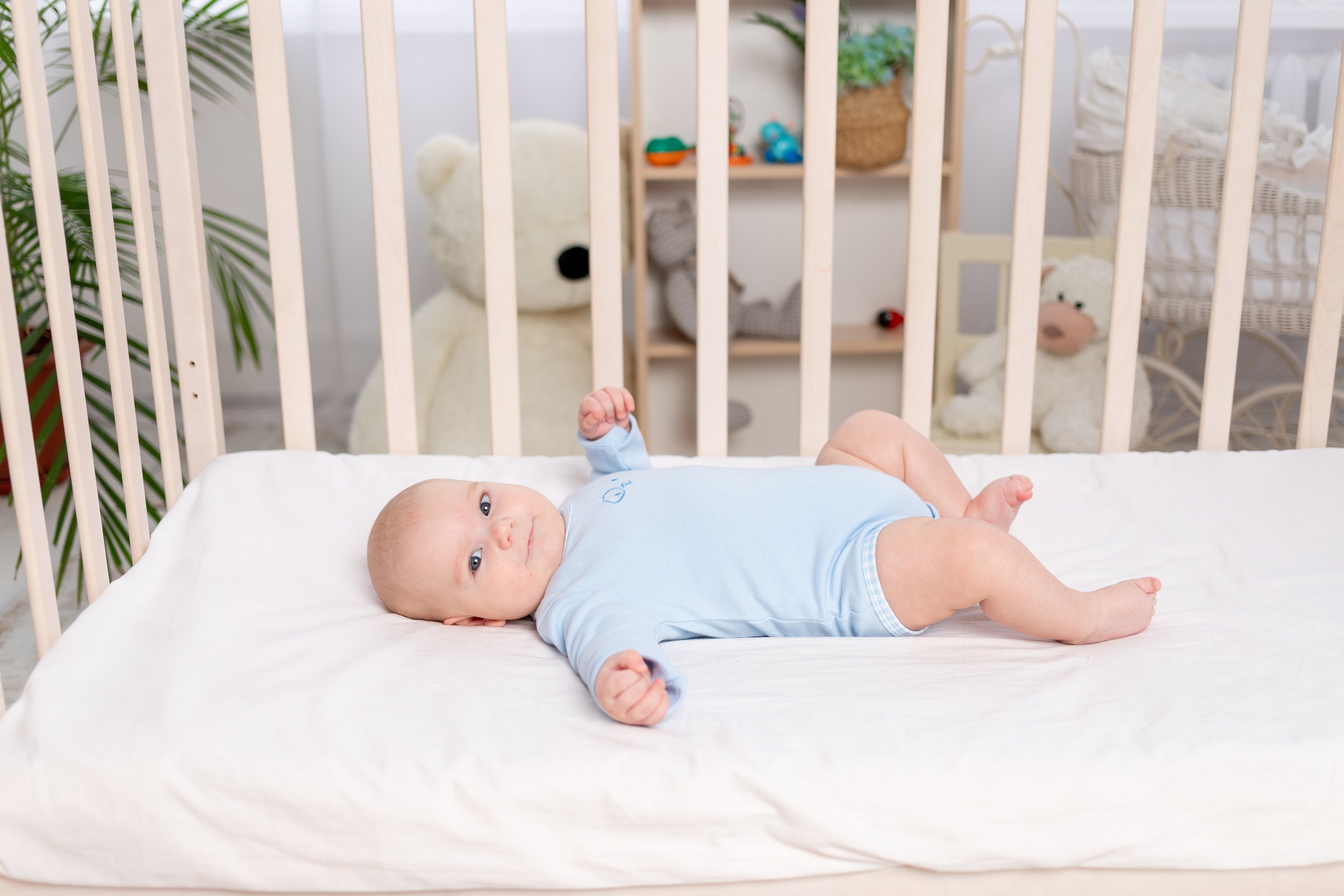Why ‘Drowsy but awake’ doesn’t work
It is often recommended to put your baby to bed ‘drowsy but awake’. This can work for Newborn babies however after this phase it can just cause issues with your little one’s sleep.
Once your baby is no longer a Newborn, their sleep structure has changed to the same as ours (see my 4 month regression article for more information on this topic) and drowsiness is classed as the first stage of sleep. Let’s think of sleep as a journey. Point X is wide awake and point Y is asleep. We want baby to get from X to Y themselves in order for them to sleep well. If we do part of that journey for them then they are not doing it completely by themselves, therefore they are not falling to sleep independently.
This means that when they wake up in the night (because we all do) then they might cry for you to come and help them to get back to sleep. So, if you helped them to get drowsy at bedtime by rocking or feeding them then they will need to you help them out again during their wake ups in the night. This can also be the case for naps. Meaning, if they were put down for their nap drowsy then they may only sleep one sleep cycle (around 30-45 minutes) because they cannot put themself into the next cycle.
To help your little one to sleep better the goal would be for them to fall asleep completely by themselves, meaning they are awake for the whole bedtime (or nap) routine and then into their bed to fall asleep unassisted. We do not want to see any drowsiness at all during this time.
Drowsiness looks like:
1. Zoning out. If you notice your baby looking off into space, this can be a sign of drowsiness. If you are feeding your baby and you notice this then talk to your baby, tickle them, or if you are feeding, remove your baby from the breast or the bottle before resuming feeding again.
2. Heavy blinking. Make sure your baby’s eyes look alert and are not blinking heavily. This can be a sign of drowsiness. The best thing to do to avoid this is to talk to your baby, sing to your baby, or give your baby a little tickle to keep them alert.
3. Closing the eyes for several minutes at a time while having the bedtime feed. Again, you want to make sure that your baby’s eyes stay alert and open through the entire feed.
Our goal is to make sure your baby remains alert and wide awake through the entire bedtime routine and goes into their bed ready to start the sleep journey from point X.
This is a reason that I recommend to my clients (from around the 4 month mark) to give the bedtime feed BEFORE starting the bedtime routine. So around 30-45 minutes before baby is due to go to bed. This can really help to make sure they are not getting drowsy on that bedtime feed.
We also want to make sure we are putting baby to bed at the appropriate time, so before they are too tired. Following age-appropriate wake windows can help to avoid this.
If you start to put your baby down awake you may find they start to protest all of a sudden. This is showing us that baby was relying on you to get them to sleep and now they are finding it difficult to do by themselves. Within a few days your little can learn to fall asleep independently, meaning they can sleep throughout the night and have longer naps.
If you would like to chat about your baby’s sleep challenges and learn how I can help you with them please contact me for a free 15 minute evaluation call. You can book this call here.

